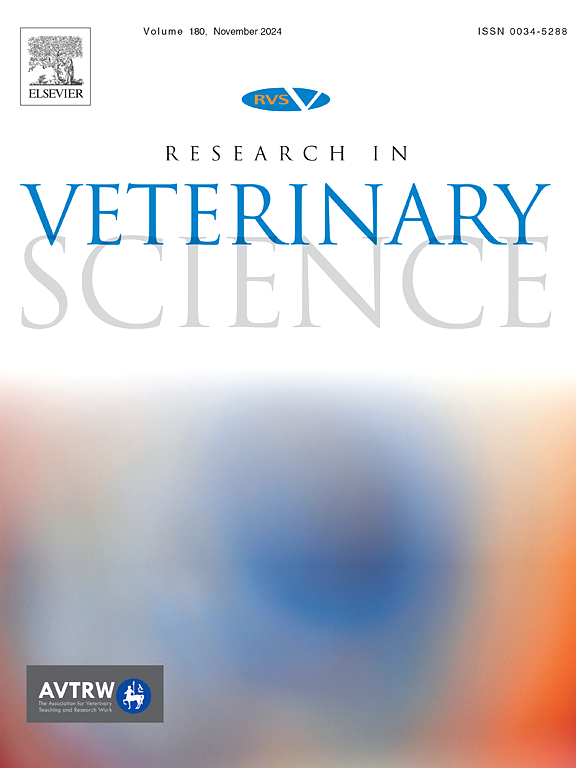使用现成的3d打印钛髋臼边缘扩展植入物治疗犬髋关节发育不良的初步研究
IF 2.2
3区 农林科学
Q1 VETERINARY SCIENCES
引用次数: 0
摘要
髋关节发育不良(HD)是狗最普遍的骨科问题之一。通用货架植入物是3d打印设备,旨在解决不同大小和髋关节松弛评分的狗的HD。这项初步研究评估了6只诊断为双侧HD的狗的通用支架植入物的可行性和有效性。每只狗都在一次手术中接受了双侧髋关节手术,随后是12个月的监测期。术后CT扫描显示所有12髋的股骨头覆盖范围增加,导致髋关节反向松弛。然而,植入物与最佳一致性的位置偏差为5.1±1.7 mm。在术前和术后观察轻度至中度骨关节炎(OA)的进展。虽然力板分析显示没有明显的变化,但术后12个月业主问卷得分降低,表明功能结果得到改善。与术前相比,术后内旋和外展角度降低,提示植入物定位可能造成撞击。1只犬(双髋)出现并发症。另一只狗在手术后9个月因无关原因死亡。这些髋关节的死后组织学和显微ct分析显示植入物边缘延伸区周围的局部软骨缺损。然而,在狗死前,主人没有报告跛行或臀部不适。通用支架植入物通过改善股骨头覆盖范围,有效增强髋关节稳定性,缓解疼痛相关行为。在本研究中,次优放置与活动范围减小和OA进展有关。改良植入物的设计和调整尺寸方案以更好地匹配髋臼形态是必要的。本文章由计算机程序翻译,如有差异,请以英文原文为准。
Pilot study on the use of an off-the-shelf 3D-printed titanium acetabular rim extension implant for treating canine hip dysplasia
Hip dysplasia (HD) is one of the most prevalent orthopedic issues in dogs. Generic shelf implants are 3D-printed devices designed to address HD in dogs of varying sizes and hip laxity scores. This pilot study evaluated the feasibility and effectiveness of generic shelf implants in six dogs diagnosed with bilateral HD. Each dog underwent bilateral hip surgery in a single session followed by a 12-month monitoring period.
Post-operative CT scans revealed increased femoral head coverage in all 12 hips, resulting in reversed hip laxity. However, implants exhibited positional deviations from optimal congruency for 5.1 ± 1.7 mm. Mild to moderate osteoarthritis (OA) progression was observed during the lead times and post-operatively. Although force plate analysis showed no significant changes, functional outcomes improved, as demonstrated by reduced owner questionnaire scores at 12 months post-surgery. Post-operative internal rotation and abduction angles were reduced compared to pre-operative values, suggesting potential impingement due to implant positioning. Complications were observed in one dog (two hips). Another dog died nine months post-surgery due to unrelated causes. Post-mortem histology and micro-CT analysis of these hip joints revealed localized cartilage depletion around the implant's rim extension area. However, no lameness or hip discomfort was reported by the owner before the dog's death.
The generic shelf implant effectively enhances hip stability and alleviates pain-related behaviors by improving femoral head coverage. Suboptimal placement was associated with reduced range of motion and OA progression in this study. Refinements to the implant design and adjusting sizing protocols to better match acetabular morphology are necessary.
求助全文
通过发布文献求助,成功后即可免费获取论文全文。
去求助
来源期刊

Research in veterinary science
农林科学-兽医学
CiteScore
4.40
自引率
4.20%
发文量
312
审稿时长
75 days
期刊介绍:
Research in Veterinary Science is an International multi-disciplinary journal publishing original articles, reviews and short communications of a high scientific and ethical standard in all aspects of veterinary and biomedical research.
The primary aim of the journal is to inform veterinary and biomedical scientists of significant advances in veterinary and related research through prompt publication and dissemination. Secondly, the journal aims to provide a general multi-disciplinary forum for discussion and debate of news and issues concerning veterinary science. Thirdly, to promote the dissemination of knowledge to a broader range of professions, globally.
High quality papers on all species of animals are considered, particularly those considered to be of high scientific importance and originality, and with interdisciplinary interest. The journal encourages papers providing results that have clear implications for understanding disease pathogenesis and for the development of control measures or treatments, as well as those dealing with a comparative biomedical approach, which represents a substantial improvement to animal and human health.
Studies without a robust scientific hypothesis or that are preliminary, or of weak originality, as well as negative results, are not appropriate for the journal. Furthermore, observational approaches, case studies or field reports lacking an advancement in general knowledge do not fall within the scope of the journal.
 求助内容:
求助内容: 应助结果提醒方式:
应助结果提醒方式:


